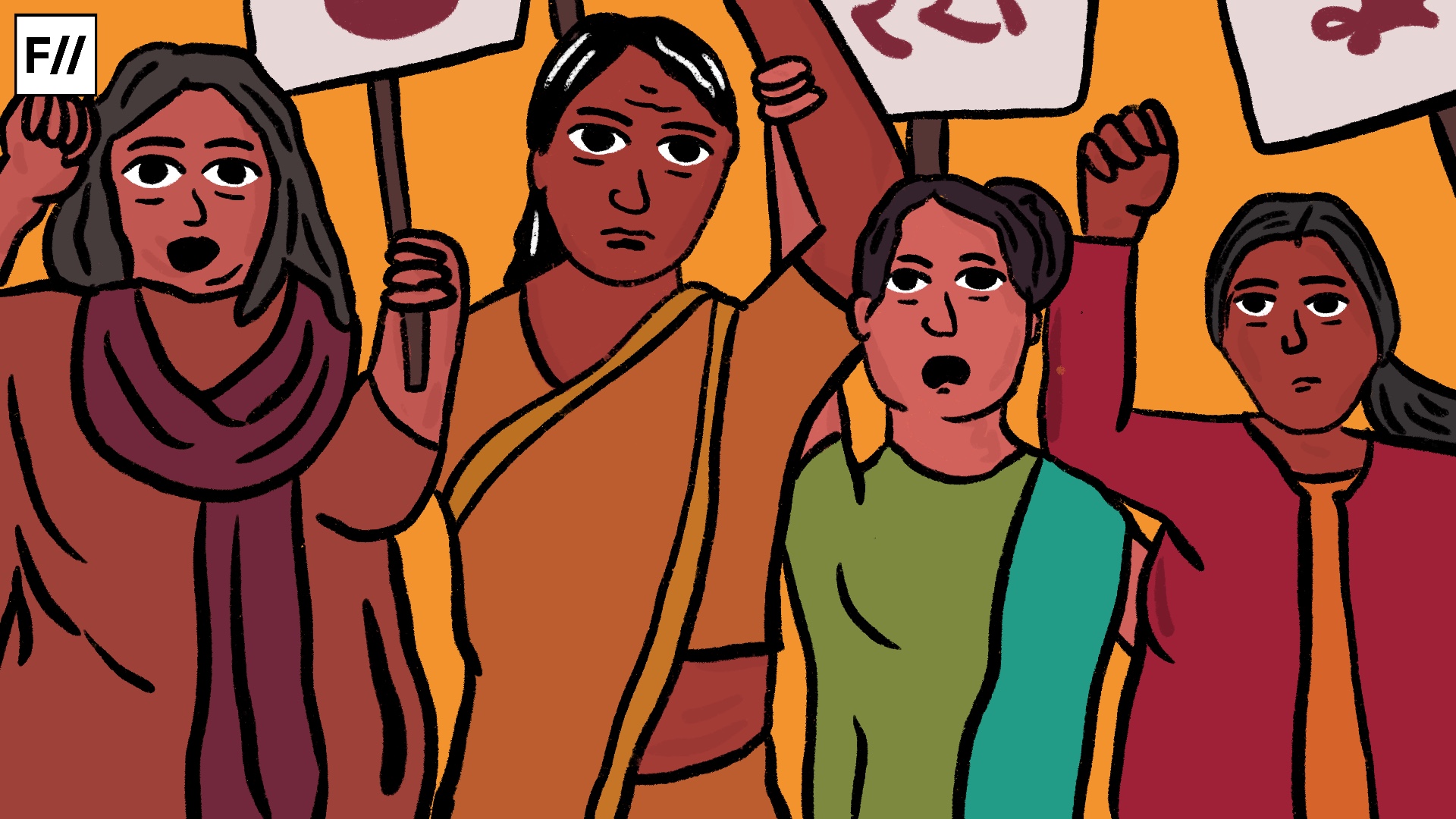Trigger Warning- Sexual abuse, rape and gender based violence
West Bengal has been on the boil and the upheaval comes from a small island in the Sunderbans region. An island isolated from land and covered with water from all corners, tells a story of land grab, assault, systemic violence, and sexual harassment. The matter has escalated with women protesting and demanding justice just a few months away from the Lok Sabha elections.
What happened in Sandeshkhali?
It all started on January 5 when ED officials reached Sandeshkhali to interrogate Shahjahan Sheikh in an alleged ration distribution scam. The officials could not meet Sheikh as they were met with an angry mob that thrashed them and chased them away. Some thousand local people did not let the officials question Sheikh Shahjahan, reportedly the strongest man in Sandeshkhali in the Basirhat subdivision.
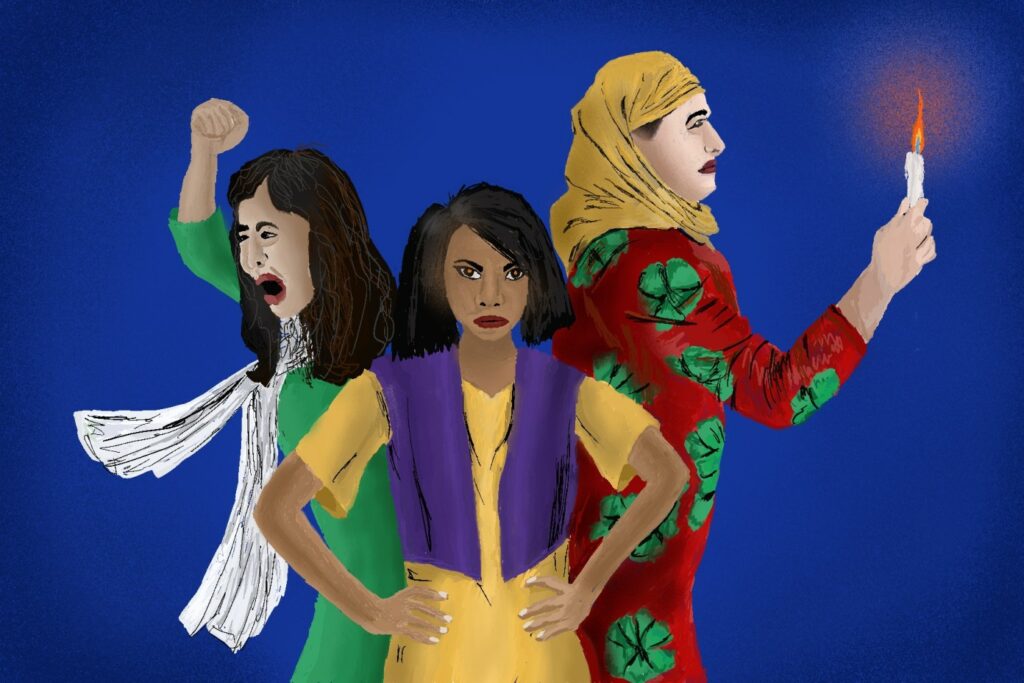
Some reporters claim that Sheikh was in his house when the officials were being assaulted as later confirmed through his phone records. They claim that he is still very much in control although Shahjahan has been absconding since the day ED knocked on his door.
Some reporters claim that Sheikh was in his house when the officials were being assaulted as later confirmed through his phone records.
The situation intensified when the local women came to protest. They blamed Sheikh Shahjahan and his men for illegal land grabbing and sexual harassment. They recounted how a JCB would appear in their fields overnight and turn their field into small fishery ponds.
Recounting horrors
The reminisce of assault did not stop at land grabbing, the women of Sandeshkhali recounted how they were summoned to the TMC party office and coerced to act according to the whims of Shahjahan’s men. A local woman told the media, ‘Party (TMC) men would survey every home and if there was any beautiful women, primarily a young wife or a girl, they would take them to the party office. They will keep that woman there night after night till they are satisfied.’
The alleged victims named Shahjahan’s close aides Uttam Sardar and Shibaprasad Hazra as the orchestrators of the crime and assault. The tale of assault did not stop here, ‘One might be the husband, but he will not have his rights on her. One would have to let go of his wife. We are unable to love here. There is always a fear of being tortured or sexual molestation. We want safety. Most of our men have left the village and are working in other states,’ a woman told PTI.
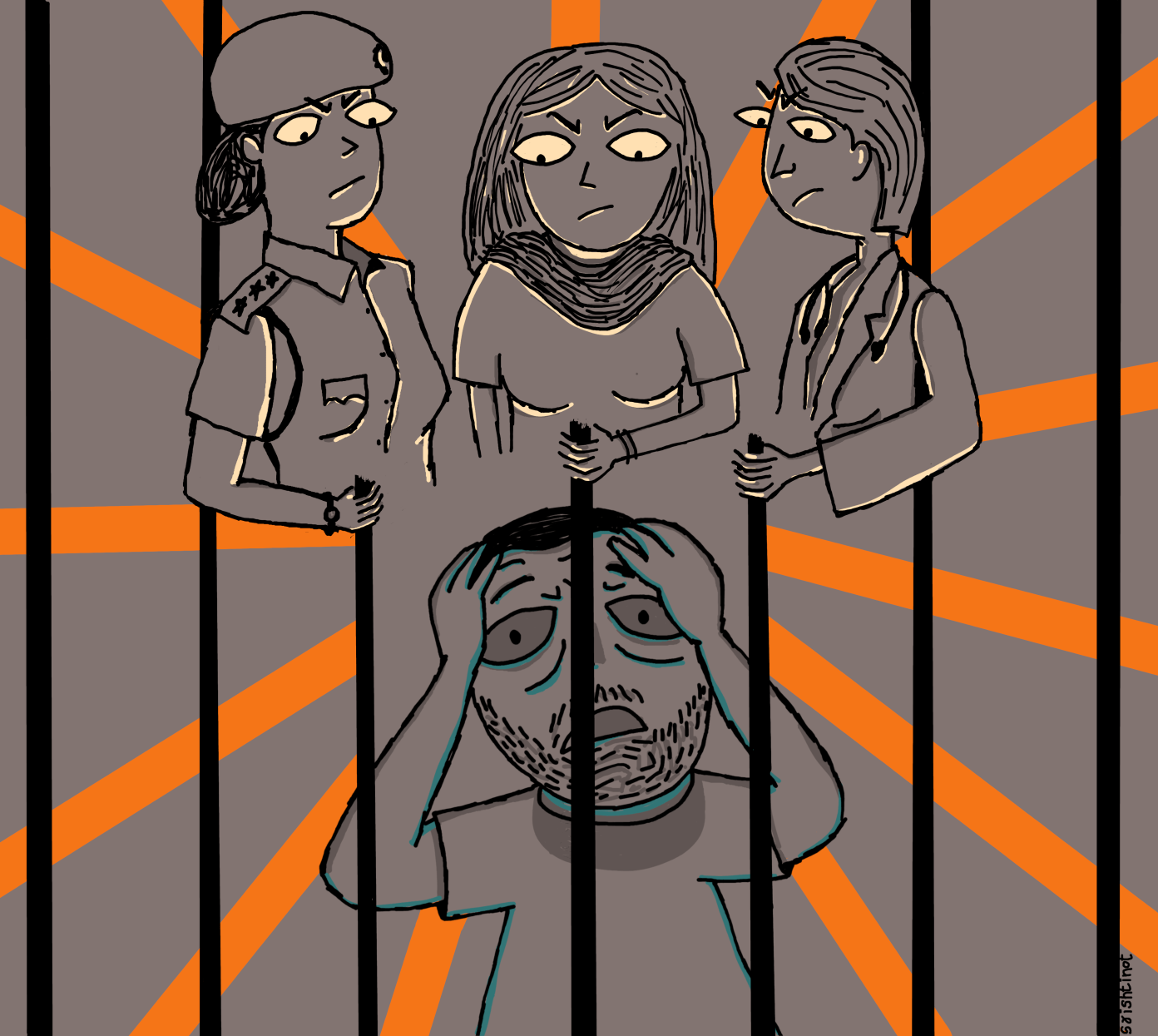
Sandeshkhali is a small village where the main source of income is agriculture. With goons grabbing land, the men were forced to migrate to other lands in search of work. They left behind young wives and aging parents. The vulnerable were exploited by the men in power and left to fend for themselves.
Who is Sheikh Shahjahan?
Sheikh Shahjahan’s rise to power is a story worth telling. Beginning as a trekker driver and part-time vegetable vendor in 1999, he entered formal politics in 2003. Shahjahan followed his uncle Moslem Sheikh’s footsteps who was a member of the CPI(M). Both of them established a strong hold on the area of North 24 parganas even though the Left lost elections there back-to-back.
Through his philanthropic endeavours and employment initiatives, Shahjahan earned popularity amongst the locals.
Through his philanthropic endeavours and employment initiatives, Shahjahan earned popularity amongst the locals. There are many videos posted online in which he is seen distributing toffees to the kids. His rise to power is an ideal example of Gramsci’s hegemony.
In 2013, he joined the TMC party under the influence of Jyotipriya Mallick. He was traced through Mallick’s payroll contact in the Ration scam. Shahjahan is an ideal narcissist, and a self-proclaimed philanthropist so much so that in 2021 he took and renamed a market after himself.
Politics and protest
Women’s protest unveiled the systemic violence in Sandeshkhali and the role of local police. Women claimed that they had been complaining about the atrocities but the police only turned them back to Hazra and Uttam for reconciliation. The police on the other hand refuted the account and claimed that only four complaints had been filed and none mentioned rape or sexual abuse.
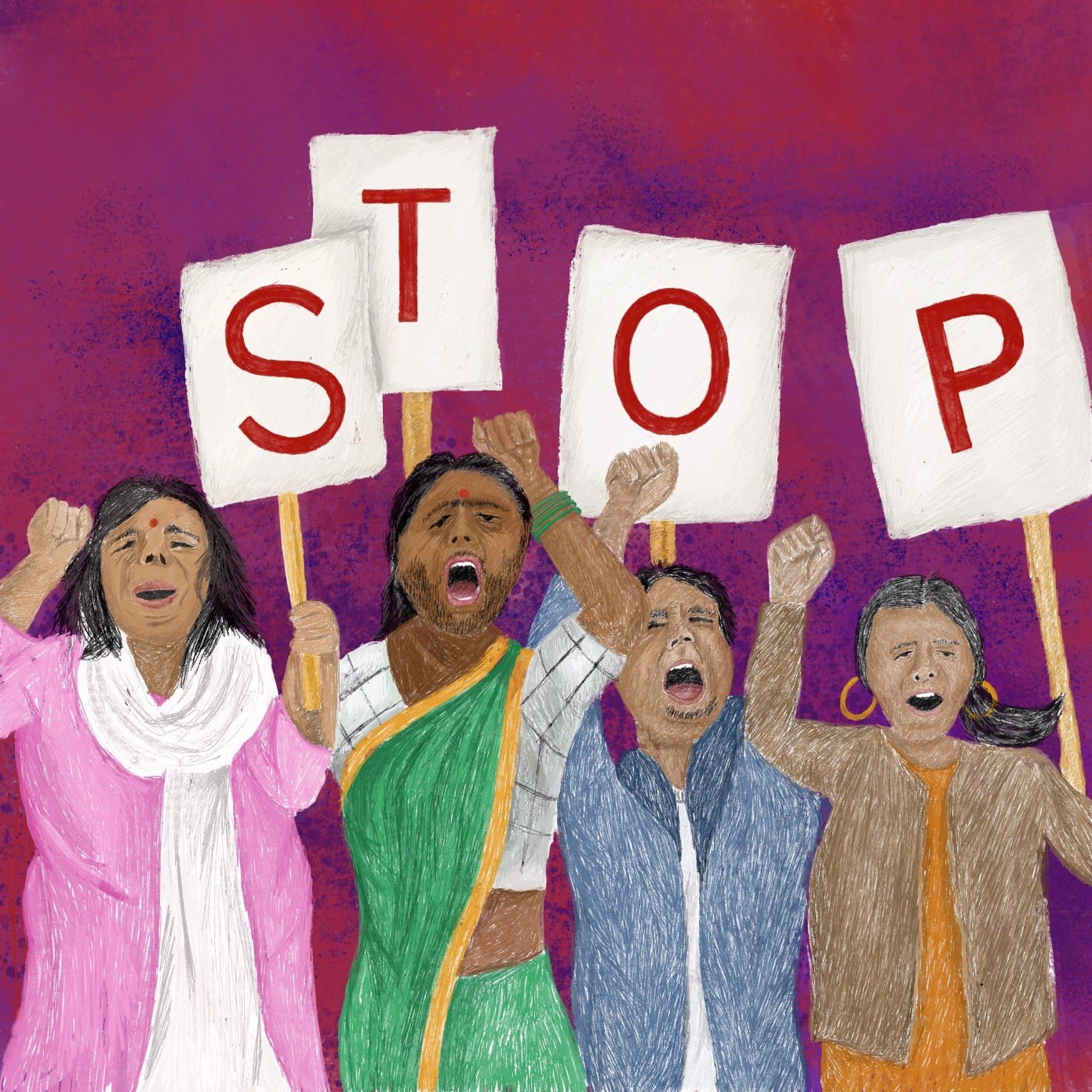
The role of local police when ED officials tried to interrogate Shahjahan remains questionable. Uttam was arrested by the police when pressure mounted and Hazra could be apprehended only on Saturday. Sheikh Shahjahan remained at large till this article was written.
After political unrest and the opposition’s stronghold of the situation, the police questioned more women in the area and added gang rape and attempt to murder charges. Two senior police officers, Sunil Kumar, Deputy Inspector General (DIG) in charge of Basirhat range, and Siddinath Gupta, Additional Director General (South Bengal) were transferred. This move was also seen by critics as Mamata Banerjee’s attempt to calm the situation.
A political battle in Sandeshkhali
Sandeshkhali is a pandora’s box that just keeps giving. The timing of the protest presents an ideal opportunity for the opposition just months away from the Lok Sabha elections. BJP has been eyeing Bengal for a long time and its marginal increase in the last Lok Sabha elections has shaken the ground for Didi.
BJP has been eyeing Bengal for a long time and its marginal increase in the last Lok Sabha elections has shaken the ground for Didi.
Sandeshkhali is a dominantly Trinamool Congress base. With over 90% of voters, Mamata holds a strong position in the area. Till February 17, the state government was in denial and maintained that the allegations of sexual assault and rape are unsubstantiated. It was with the increasing pressure that it ultimately agreed.
Banerjee calls Sandeshkhali a ‘spot vulnerable to tension’ and labels all speaking for the women with covered faces as ‘outsiders’. In the politics of home and outside, women of Sandeshkhali were paraded and used. While the TMC has appointed teams to investigate the incident, a BJP fact finding team led by J.P. Nadda was stopped by police halfway. Section 144 was imposed to keep the media and opposition at bay.

Both BJP and TMC have planned grand political rallies in the area in the coming days.
Appearances in Sandeshkhali
Appearance became a grave point of contention in the entire outrage of Sandeshkhali. While Mamata Banerjee’s perception shifted from being a protector to an enabler, the opposition tried hard to set a stage and define an appearance. BJP Minister Smriti Irani and IT cell chief Amit Malviya tried their best to color the incident as a communal issue but it soon died down. The locals and analysts corroborated that it had nothing to do with the communities.
The appearances of protesting women was also made a point of political discourse.
The appearances of protesting women was also made a point of political discourse. TMC MLA and Zilla Parishad head Narayan Goswami declared that it was not the Adivasi women protesting because of their complexion. He asked, ‘Real Adivasi women can be identified by their bodies and skin tone. However, the women alleging harassment in front of the camera are fair. How can we say they are local Adivasis?’
From the color of their skin to being proclaimed as the ‘Hindu Scheduled Tribe,’ Adivasi women have become pawns in the greater political drama.
Demand for justice
Tensions in Sandeshkhali escalated when the women came together and burnt poultry farms owned by TMC kingpins. With the situation turning worse and more instances of torture and abuse surfacing, Bengal Governor CV Ananda Bose cut short his Kerala trip and returned. He described the whole episode as ‘ghastly, shocking, shattering’ and ‘a shame for the civil society’.
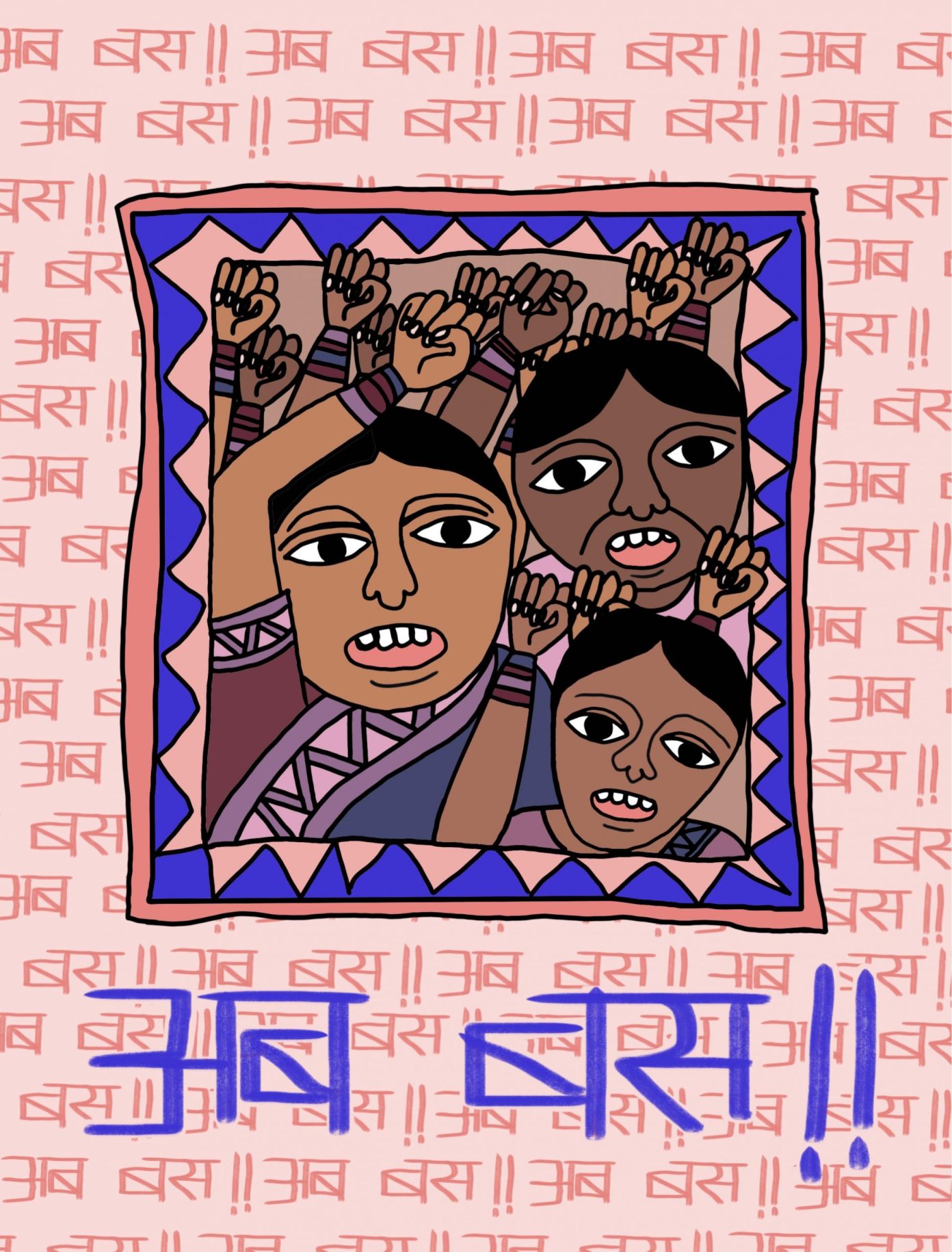
Local people demand a Special Task Force or a Special Investigation Team. National Commission of Women (NCW) chief Rekha Sharma called for Mamata Banerjee’s resignation and imposition of President’s rule in Sandeshkhali.
Gender based violence in Sandeshkhali
Sandeshkhali’s story doesn’t end at an institutional committee or political rally. The need is to see Adivasi women as a citizen and realise the importance of their rights. These women are doubly marginalised and left at the brink to wither away. They are not covered by media or targeted by leaders, they are used and discarded.
The very description of the horrors unveils the intrinsic social difference and gender-based violence. These women were left back by their husbands and had no patriarch to protect them against the whims of the goons. The absence of agency is a systemic starvation that we have subjected our Adivasi women to.
Being a woman Chief Minister, we look at Mamata Banerjee with hopeful eyes to prevent gender-based violence but her selective support has enabled the perpetrators of this heinous crime. It is an ideal case study of how women become agents of patriarchy and fail the system they are elected to govern.
About the author(s)
Dr. Guni Vats is an Assistant Professor at the Department of English, Manav Rachna International Institute of Research and Studies. A PhD in Gender Studies, she is a renowned researcher, writer, and scholar.
